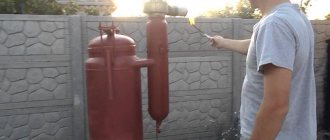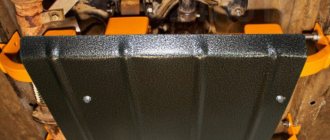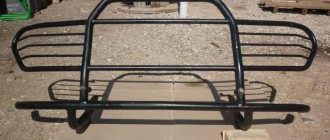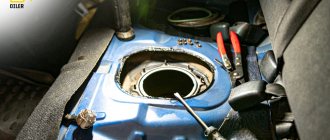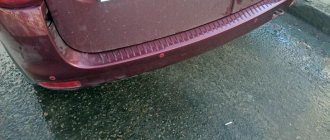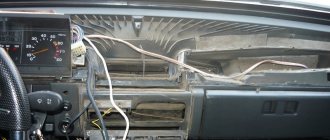Engine tuning
Although the classic engines are outdated, they can also be used to build quite powerful units. In some ways, their simplicity and lack of electronics is even a plus. you can do a lot yourself. And the costs for electronic gadgets may clearly be higher. It’s not for nothing that in America they still build hot rods with carburetors.
This material is mostly theoretical in nature because the result obtained largely depends on your efforts, skills, time, etc. If you don’t rush anywhere and do everything carefully, you can “turn up” the engine to 150 hp.
To obtain a high-revving engine, it is better to build a unit with a volume of no more than 1.6 liters, because an engine with a displacement of more than 1.6 will be “heavy” and reluctant to gain speed.
Tools: 1. All tools for disassembly and assembly. 2. Electric drill 3. Cones with a diameter of 29 mm. and 31mm. 4. Polishing paste.
Refinishing the cylinder head is a rather labor-intensive procedure that requires a lot of patience, but believe me, it’s worth it! The first step is to use a 31mm diameter roller cutter to clean the cylinder head channels through which fuel flows from the intake manifold. The channels must have a smooth transition and a larger cross-section. It is important that in the end, after modification, all channels are the same.
We repeat the same with the release, but with a cutter with a diameter of 29 mm.
Valves: 39 for intake and 34 for exhaust. We also polish the channels. As an option, you can take valves from a Mitsubishi Pajero and process their stems to the size of the original Zhiguli ones. The valve plates also need to be modified. All valves must be adjusted according to weight.
Let's move on to the camshaft. For a high-speed engine, it is better to install a camshaft with a high valve lift. To accurately adjust the valve timing, a split gear is required.
The intake manifold needs to be bored and thoroughly polished.
Of course, the carburetor also needs improvement. More fuel and air will pass through it and it needs to be adjusted to this. There are many books and articles on this topic, so we won’t dwell on it.
A significantly boosted engine (in our case, one and a half to two times) should breathe well. Therefore, for such a unit, installing a zero-resistance air filter is not a show-off, but a real necessity.
It is highly advisable to replace the release. Ideal exhaust pattern: spider 4-2-1 - pipe without resonator - direct-flow muffler.
Engine. It would be a good idea to replace the connecting rods with racing connecting rods of the same size as “stock”. We replace the pistons with forged ones, each with two T-rings. Expensive, but cast pistons on high-speed engines are simply not enough. It is imperative to replace the bearings with more revving ones that can withstand up to 10,000 rpm. We increase the advance angle in the ignition distributor. This can increase power by 10hp.
Precautionary measures
When painting, do not forget about safety precautions, because paint is difficult to wash off hands and other surfaces on which it has come into contact.
- In order not to add more work to yourself with washing and cleaning the workplace, you need to carry out painting on the street or in a place well covered on all sides with newspapers.
- Keep the spray approximately 30cm from the surface. When pressing the spray button, make sure that a small amount of paint comes out of the hole.
- Start painting the vase from the bottom, and when it dries, paint the top.
- Make sure the previous coat of paint has dried before repainting.
- Before starting work, put on rubber gloves and goggles to protect your hands and eyes from splashes.
Glowing vase
This vase can be placed on the balcony, veranda or outside. How to make a vase with your own hands that will glow after dark?
To work you will need:
- Large glass jar.
- Scissors.
- Multi-colored luminescent sparkles or glitter.
- Apply drops of clear glue to the vase in some places. There is no need to try to treat the entire surface at once. Do this gradually, in several stages.
- Take a handful of glitter in your hand and sprinkle it on the vase, holding it over an old newspaper. Some glitter will immediately stick to the glue blobs.
- Apply additional drops of glue to empty spaces.
- Pick up any glitter that didn't stick and sprinkle it on the vase again. Do this until the entire vase is evenly covered with glitter.
- When the glue has dried, coat the outer surface of the vase with varnish.
These jars can be placed in the garden, and then after dark your garden will be decorated with sparkling sparkles. You can insert light bulbs with a cord into them and turn such a lamp into a lamp.
Ways to increase engine power
So, how can you increase the power of a carburetor engine in practice? There are several simple and not so simple ways.
It should be noted that before increasing engine power, it is necessary to restore those horses that disappear during its long-term operation. To do this, you should pay attention to the condition of the filters, carburetor, piston and gas distribution systems.
Many horses are lost due to low-quality fuel and incorrectly selected oil. The condition of the exhaust system also plays an important role in engine performance. It would be useful to diagnose the chassis, since no amount of power will normally “push” a car whose wheels rotate with great difficulty.
If the factory power parameters are normal, then you can start tuning the engine in search of new reserves.
{banner_content}
Increase in engine displacement
Engine displacement is usually increased in two ways.
First way.
It consists of replacing the engine crankshaft with another one with a large eccentricity (a numerical indicator of the conical section, which shows the degree of its deviation from the circle).
Second way.
Another method is more prosaic; it is necessary to bore the engine cylinders for larger pistons.
So which way is better in terms of saving money?
To be honest, these two methods are expensive in themselves. The question is how much more expensive is one method than the other, and which method is more convenient and practical. And also what kind of engine you are going to tune.
POPULAR WITH READERS: TOP best motor oil manufacturers
Each method has its own pitfalls that are worth talking about.
Large papier-mâché vase
Many lovers of needlework are interested in the question of what vases are made of. Such material as papier-mâché is known to everyone. But not everyone knows how to create a beautiful product from it. Having a ceramic base, you can make your own papier-mâché vase.
- Cover a large vase with cling film.
- Cut pieces of paper and, moistening them in liquid glue, cover its surface in several layers.
- After the paper has dried thoroughly, cut it with a sharp knife and remove it from the vase.
- Seal the edges with tape.
- Cut out the bottom and also tape it to the workpiece.
- Cover the vase with two more layers of newspaper.
- Cut glossy magazine paper into different shapes. Glue the pieces on top of the newspaper and wipe thoroughly with a damp cloth, removing excess glue.
- Apply varnish.
Openwork vase made of plaster
You can make an openwork vase with your own hands from an adhesive mixture for ceramic tiles and gypsum putty.
- Tie the stocking above the foot with a knot and cut off the bottom.
- Add 250 ml of water to 1 kg of adhesive mixture.
- Place the stocking in a bucket and put the glue solution in it.
- Remove the stocking from the bucket and shake it lightly to give it a round shape.
- Insert a tin can into the middle. Leave to harden for a day.
- Moisten the nylon with water and remove it.
- Apply PVA-based putty to the workpiece. Level the layer with a knife.
- Draw patterns on the surface of the vase with a brush or stick.
- Turn the vase upside down and apply a layer of putty to the bottom. Carefully level the surface with a knife. Leave to dry for a day.
- Cracks on the surface can be additionally covered with putty. In this case, the product needs to be dried for another day.
- After the putty has dried, use a sponge to apply strengthening impregnation to the surface of the vase.
- Cover with acrylic paint. It should be thick, delicate, discreet colors.
- Remove excess paint with a sponge.
When the paint dries, unpainted areas may appear. They should be painted over with a small brush.
The vase can be left as is. Or walk over the surface with a sponge coated with silver or gold paint. Another option is to decorate with rhinestones or beads as desired.
Making vases with your own hands is a fascinating creative process. Craftswomen have come up with many ways and options for creating and decorating them. Based on these techniques, you can create your own, original and unlike others, products. Good luck!
Vase made from a plastic bottle
How to make a vase from a plastic bottle? We present one of the methods.
Cut off the top of the plastic bottle. Cut out identical parts of any configuration from cardboard. Apply glue to the edge of the cardboard and glue it to the bottle. In this case, it is better to use a heat gun.
On top of the cardboard, glue layers of cut pieces of paper soaked in liquid PVA glue. Leave the glue to dry. Any rag will be suitable for covering the vase. Wet it in a liquid solution of PVA glue and water, put it on the vase, leaving the hole on top open. When the glue has dried, paint the product and then varnish it.
A handmade flower vase will be an excellent decoration for any interior.
Vase from an old tablecloth
Simple and cheap materials, such as gypsum putty and rags, will allow you to make an original flower vase with your own hands.
- Connect two spray paint tubes with tape.
- Cover them with cling film.
- Dilute the gypsum-based putty in a basin to the consistency of liquid sour cream.
- Soak a tablecloth or large napkin well in the solution.
- Place the fabric on the tubes, straighten out the folds and leave until it hardens well.
- Remove the workpiece from the tubes, apply thick PVA glue to it. When the glue has dried, cover the vase with black paint.
You can tint the product here and there with metallic spray paint. Coat with clear stone varnish.
Vase from a bottle
Design masters can easily and simply make an original flower vase from a glass bottle.
- Cut the newspaper into small squares.
- Apply glue to each piece of paper with a brush and glue them to the surface. Try not to let one piece overlap another.
- Tear a napkin with a beautiful floral pattern with your hands and glue it to the surface.
- Remove excess glue with a napkin and, when the vase is dry, coat with varnish.
